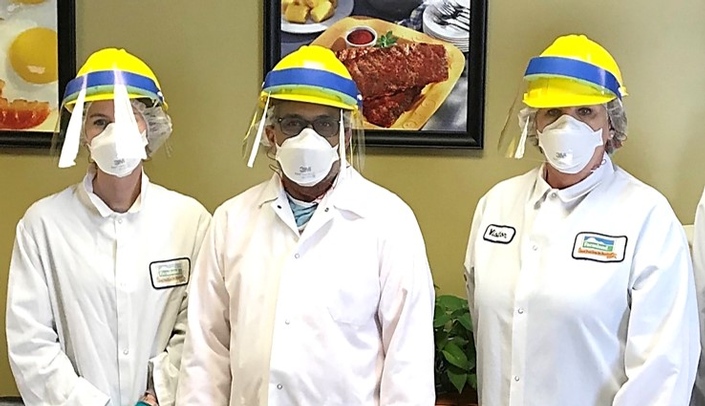While many employers were able to encourage their staff to work from home when the COVID-19 pandemic arrived in Nebraska, not all industries were so lucky; meatpacking plants have hundreds—in many cases thousands—of essential workers who remain working on the line despite a public health crisis. When the virus arrived in Nebraska plants, some were forced to temporarily halt production and close their doors for a few days while others stayed open at a reduced capacity. Faced with a pandemic that would hinder their ability to continue the important work of feeding the state, the country, and beyond, Nebraska-based meatpacking plants were concerned about the health of not only their industry, but also their workers.
Soon after coronavirus became apparent in some Nebraska meatpacking plants, the Global Center for Health Security (GCHS) reached out to plants across the state to offer technical support and provide tailored mitigation strategies, with the support of the Nebraska State Health Department and local public health departments. Shelly Schwedhelm, GCHS Executive Director of Emergency Management and Biopreparedness, assembled a team of experts who began considering risk mitigation strategies for meatpacking plants and created a checklist to identify the risks and implement mitigation strategies. The team rotated, sending two or three members to review each facility, sometimes accompanied by local health department representatives.
Traveling across the state to different facilities, the GCHS team began each visit by talking with plant leadership explaining that the visit is intended in a non-regulatory approach and merely to provide feedback and observations on opportunities, but also to identify best practices to be shared with other plants. The team then learned what systems had already been implemented, what challenges were being faced, and whether there were any existing concerns. After discussion, the team would tour the plant to examine the workflow. They would begin by learning where the employees enter the facility, what screening processes were being used, how they go to the production line, and then they would view the production line itself and walk through the area to observe the work processes. While observing the plant in production mode, the team would evaluate measures the plant could use if not already activated—like additional social distancing by installing barriers, enhancing environmental cleaning and disinfection, or implementing a universal mask-wearing policy with enforced compliance to ensure masks are worn correctly and consistently. After the tour was completed, a debrief meeting was held to review the team’s findings and to share relevant best practices from research or identified from other facilities. Providing the checklist as guidance, the team review sections and discuss potential areas for improvement as well as strengths, and answer any technical questions which may have come up.
Throughout the 13 visits made (thus far), the team continually enhanced the checklist with new lessons learned; and with the assistance of Central States Center for Agricultural Safety and Health (CS-CASH), the checklist quickly turned into a playbook of best practices. CS-CASH will be utilizing and adapting the playbook for use by poultry producers and feed yards. GCHS is widely distributing the playbook by making it available on their website (Meatpacking Facility Playbook), so other meatpacking plants across the state and country can utilize it to find and correct discrepancies in their protocol to protect workers and communities.
